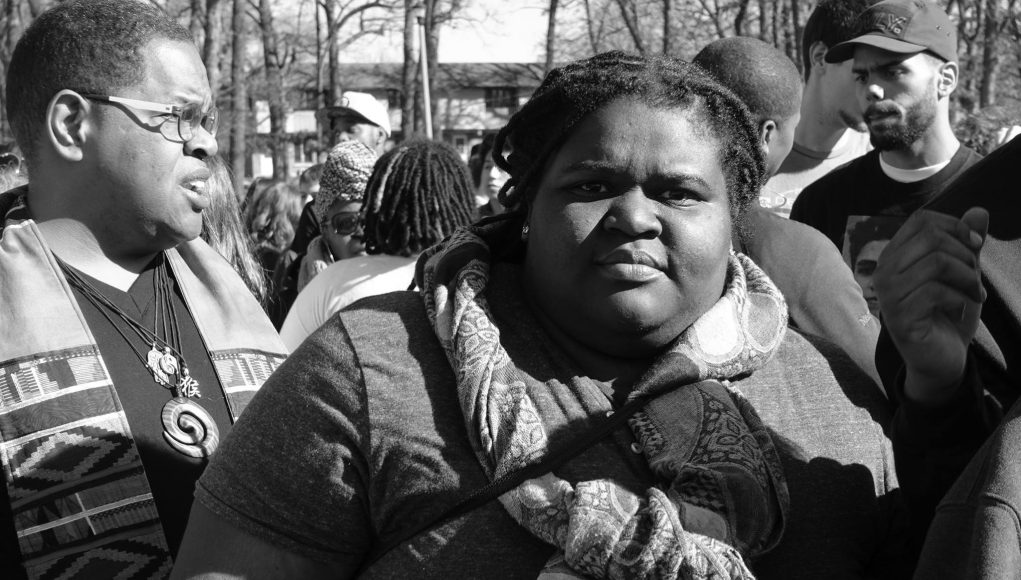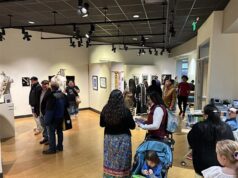In a historic move earlier this week, a coalition affiliated with the anti-racism Black Lives Matter movement released its first policy platform designed to promote concrete, real-world solutions to racial and economic inequality and Madison’s own M Adams was part of the central planning for the platform.
“The actual process for generating the platform took about a year of convening and folks working together in different groups and calls and research and studies,” says Adams, co-executive director of Freedom, Inc., a local nonprofit that works with low-income communities of color. “The impetus actually came from before and is steeped in many years of black liberation work. From the Ferguson uprising and the demands that were put out, there was a national call and an interest in having transformative policies to organize around.”
The Movement for Black Lives, an umbrella group that includes members of Black Lives Matter, officially released the platform on Monday. It developed out of a Movement for Black Lives conference that more than 2,000 black activists attended in at Cleveland State University in July of 2015.
“One of the points raised there was that folks really wanted a collective vision, collective demands, and collective initiatives to organize around,” Adams tells Madison365. “We engaged in this year-long process to create the document that you see.”
It marks the first time that Black Lives Matter, well known for its widespread protests against police shootings of black Americans, has officially entered the national political fray in terms of policy. The six demands and roughly 40 policy recommendations touch on topics ranging from reducing U.S. military spending to safe drinking water to criminal justice reform to reparations for slavery in the United States. Here are the six basic demands:
◆ End the War on Black People
◆ Reparations
◆ Invest-Divest
◆ Economic Justice
◆ Community Control
◆ Political Power

“It was absolutely important at a time and in a continent where so many people are becoming more and more so politically engaged and at a time where many of us are continuing to put our bodies on the line in the streets and folks are co-opting that resistance approach creating platforms and policies that they THINK meet the needs and the demands we are making,” Adams says. “We knew it was super-important to lay out our vision so people could no longer say in our name that this is what we want. We have articulated what it is that we want. They can no longer make these decisions on our behalf.”
Published to coincide with the upcoming two-year anniversary of the death of Michael Brown in Ferguson, Missouri, that triggered national demonstrations focused on institutional racism in the criminal justice system, “A Vision for Black Lives: Policy Demands for Black Power, Freedom & Justice” had an intent to move beyond simply being reactionary to creating a radical transformation.
“Absolutely. We want fundamental, transformational change,” Adams says. “We don’t want to just add new structures to what is killing our community, we want to fundamentally uproot structures that are killing our community. We’re seeking deep, fundamental change that will ultimately end the violence and not just repackage it as something different.”
How tough was it to get it down to just 40 policy recommendations?
“There were certainly challenges in the process. There were sometimes political differences,” Adams says. “And it’s challenging to gather all of this information and thoughts and experiences and political beliefs of everybody who participated and then synthesizing it in such a way where people all felt represented and in such a way that is actually useful for the work we are going to do with it.”
Personally, Adams had a few things that were particularly important to her that she wanted in. “Everything that was in there was great. We needed everything. A thing that jumped out to me, in particular, was community control – really emphasizing that,” she says. “We should really be having control and power over the things that are affecting our lives; not just influence and not just suggestions but actual power and control over institutions and resources that impact our lives.

(Photo by Nate Royko Maurer)
“The other thing that I thought was very important is that when we talk about black liberation work that we’re talking about for all black people,” she adds. “Too often, we’re not really paying attention to queer and trans people, women, folks incarcerated, folks formerly incarcerated, etc. I wanted to make sure that for whatever we were fighting for, that we were being inclusive.”
What is really revolutionary about the platform is how it places black queer women, trans, unemployed and incarcerated youth at the center of its policy agenda.
“I think that, oftentimes, they get overlooked. But in working on this, black women and queer and trans people were very involved,” Adams says. “I think that’s very important … especially for something this big. So often, black politics and voices are dominated by heterosexual, cis[gender] men.”
In the new platform, Movement for Black Lives argues that a racial and economic justice policy agenda should not just include marginalized constituencies within black America, but must be built around them.
“Because there are so many different people, it was inevitable that we created a document that spans across a number of different issues,” Adams says. “We knew that whatever we created, if we are going to take this liberation work seriously, that it was going to have to be broad enough to really address the broad violence we see in black communities.”
Adams stressed that people interested in joining in the fight can join up with local organizations who are already working in various areas which are listed throughout the platform.
“For each one of the policies that are written, there are short summaries of the issue and what people can do to help,” she says. “We wanted to make sure that we really loaded the document with resources and models so people can actually do the work. We want people to use this platform and to take it back to the streets and organize. Wherever you are and whoever you are, we want people to use this platform to advance the cause.”










